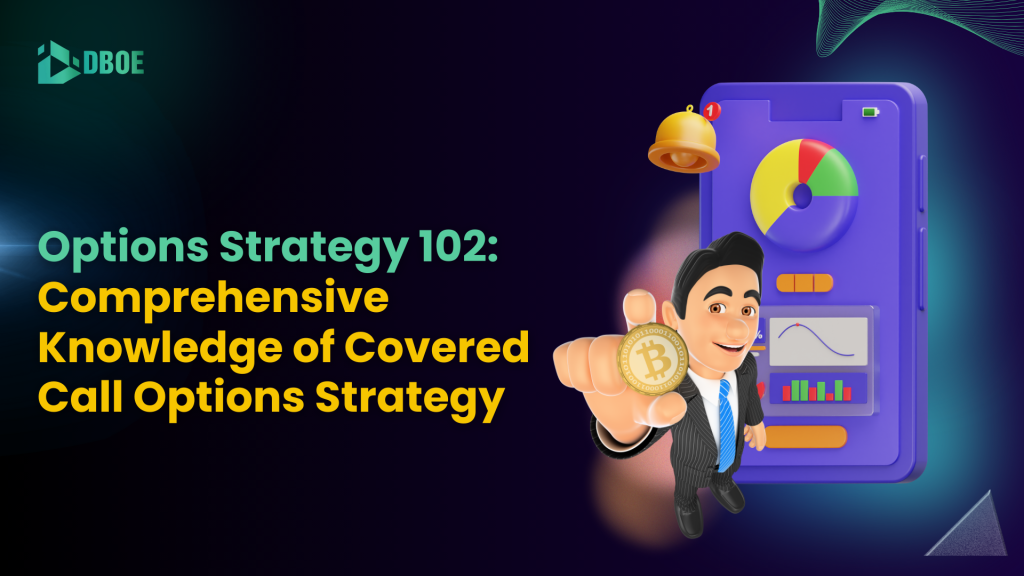Understanding Covered Call Options
A covered call is an options trading strategy that allows investors to sell call options while owning the asset’s underlying price. This strategy generates income from the premiums of the options sold, providing a stream of potential profit for the seller.
The essence of a covered call involves holding a long position in an asset and simultaneously writing (selling) call options on that same asset. In this setup, the individual essentially agrees to sell their shares at a specified strike price within a predetermined time frame if the buyer exercises the option.
The ideal scenario for implementing a covered call occurs when the investor believes that the asset will not experience significant price movements beyond the strike price during the option’s life.
Mechanics of Covered Call Strategy
Investors typically aim for a stable or slightly bullish market outlook when employing a covered call strategy. By selling call options, they receive premiums that serve as additional income, which can help offset potential losses should the asset price decline. Let’s consider a crypto example: an investor who owns 10 Ethereum (ETH), trading at $1,600 per ETH, might sell a call option with a $1,800 strike price for a premium of $50 per ETH. In this case, the maximum profit the investor can realize is capped at $1,850 per ETH (the sum of the strike price and premium). Conversely, if the ETH price declines to $1,400, the investor can still collect the $50 premium, reducing their holdings’ losses.
Benefits and Risks of Covered Calls
The appeal of covered calls lies in their ability to provide a steady income stream while holding investments. Some significant benefits include:
- Income Generation: Selling call options provides immediate income in the form of premiums, supplementing dividends or other sources of return.
- Downside Protection: While covered calls do not eliminate losses, the premiums received help cushion the impact of declines in asset value.
- Flexibility: Investors can adjust their strategy according to market conditions, choosing to roll options over or write new ones as expiration approaches.
However, certain risks are associated with the covered call strategy:
- Limited Upside Potential: If the asset price surpasses the strike price, the investor is obligated to sell the shares, potentially missing out on significant gains.
- Downside Risk Still Exists: While the premium cushions losses, if the asset price falls dramatically, the investor is still left with reduced shares’ value after the premium is factored in.
Connecting Covered Calls with DBOE
With the emergence of DBOE, investors gain access to decentralized options trading that aligns seamlessly with covered call strategies. DBOE operates as a decentralized exchange, facilitating European options trading on popular cryptocurrencies like BTC, ETH, SOL, LINK, MATIC, AVAX, and BNB. Moreover, DBOE is the only few that allows SOL options trading and the only one to list LINK’s options. Because of that, any investors that are holding these two coins, they could benefit more by joining DBOE and leverage by investing in options. DBOE implements an On-chain Order Book (OB) model, ensuring efficient matching of buy and sell orders while offering users enhanced control over their trades. For investors interested in covered calls, DBOE provides an innovative platform where they can apply traditional strategies in a digital context. Here’s how DBOE enhances the execution of covered call strategies:
- Lower Entry Barriers: The decentralized nature of DBOE allows users to participate in options trading without intermediaries, reducing costs associated with traditional centralized exchanges.
- High Liquidity and Flexibility: Advanced trading features allow users to explore various option structures and effectively manage positions in a fluctuating market.
- Hedging Opportunities: Investors can use DBOE to hedge against price volatility by executing covered calls on their cryptocurrency holdings, gaining market stability and upfront premiums from options sales.
Conclusion
As investors seek to navigate the complex landscape of options trading, covered call strategies stand out for their potential to enhance income and mitigate risk. The connection with DBOE further elevates this strategy, offering a modernized approach to options trading that aligns with investor needs in an increasingly digital economy. Through the innovative features provided by DBOE, investors can implement covered call strategies effectively, maximizing profit potential while minimizing risk exposure. Whether incorporating traditional equities or cryptocurrencies, covered calls remain a valuable tool for income generation in both stable and volatile market environments. ——————————————————————————– At DBOE, we provide comprehensive resources and support to help you navigate the complexities of options trading. We aim to make options trading more secure and accessible. Start your options trading journey with DBOE today at: Website or Mobile app. Disclaimer: The information in this article is not intended as investment advice. Cryptocurrency investment activities are not legally recognized or protected in some countries. Cryptocurrencies always involve financial risks.











